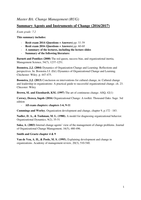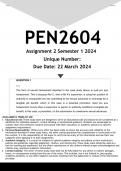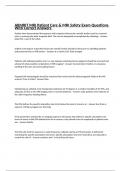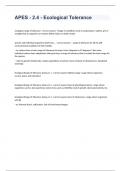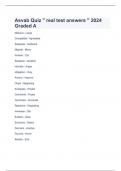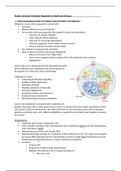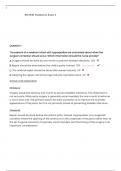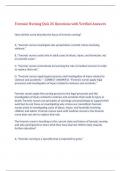Samenvatting
Samenvatting/summary en exams Agents and Instruments of Change; A&I
Samenvatting en proeftentamens/exams van Agents and Instruments of Change (A&I): - A summary of the lectures, including the lecture slides - Summary of the course literature - Resit exam 2014 (Questions Answers) pp. 51-59 - Resit exam 2016 (Questions Answers) pp. 60-68 Exam grade: 7.2
[Meer zien]
